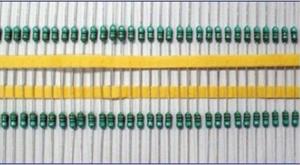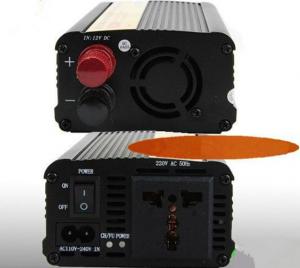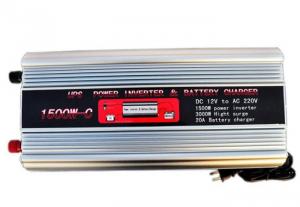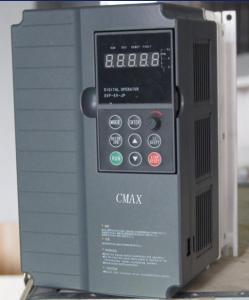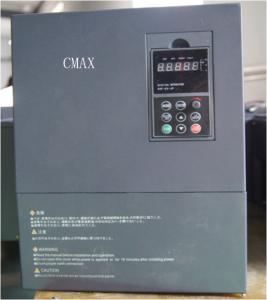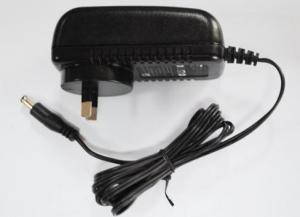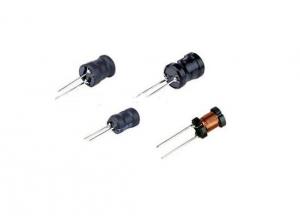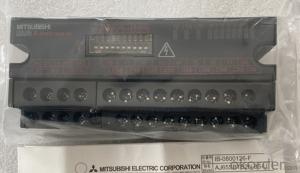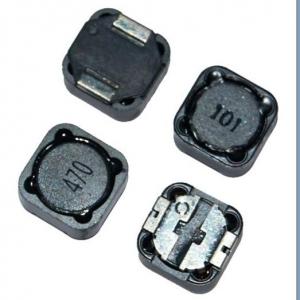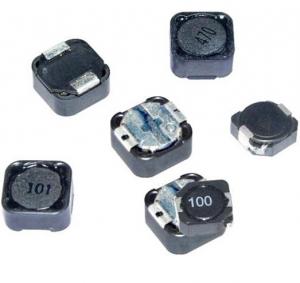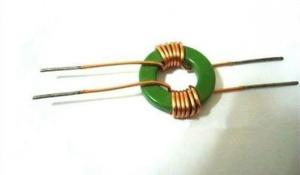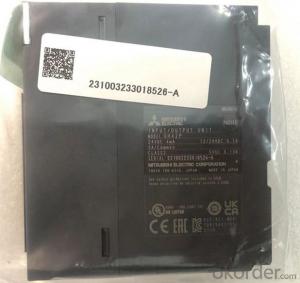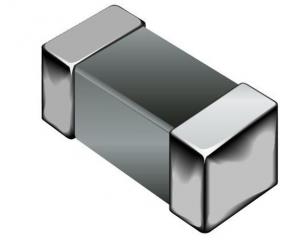Color Loop Inductor
- Loading Port:
- China Main Port
- Payment Terms:
- TT or LC
- Min Order Qty:
- 1000 Pieces pc
- Supply Capability:
- 10000 Pieces per Week pc/month
OKorder Service Pledge
OKorder Financial Service
You Might Also Like
1.Qualified material competative price
2.small loss
3.usage:instrutment phase:single
4.coil structure:axial
5.core dimension:adjustable by clients
6.size:follow according client's requirement
7.Remark:we can produce it according client's requirement
Our products have gained the international certifications, such as CQC, CE, RoHS, UL and so on, from internationally powerful authorities. We have got ISO9001 certificate. We promise to offer the best products to our clients. We look forward to cooperating with all friends for more mutual benefits.
- Q: could anyone help me explain and solve the physics question?see the following images ( inculding the answer
- Answer is b This question assumes a specific type of inductor. The most simple inductor is the air core coil. In that type the length l of the coil is in the denominator of the expression for L. Thus if the length is half, L is doubled. Therefore a is NOT correct. R/L is half and VL(t) Vm*e^-Rt/L so the charge time IS NOT Doubled. It is longer but not doubled. Energy in the inductor EL 1/2 *L*I^2 is doubled when L is doubled so c is NOT correct The magnetic field in a coil IS proportional to the number of turns of wire per unit LENGTH. Thus the magnetic field in the coil IS DOUBLED too. So d is NOT correct. The answer must be b
- Q: if i have an AC circuit consisting of R resistor and XL inductor and XC capacitor.and XLXC, so Zroot R^2 as you know and the circuit will be purely resistive, but does this mean there will be no magnetic field in the inductor?another question:if i cancel the resistor from the previous circuit and still XCXL, will the circuit act as a short circuit?
- There will always be a magnetic field in an inductor if there is current in the inductor. If you could some how eliminate all the resistance from the winding of the inductor, you would have a short circuit at the resonant frequency. In reality there would still be a small amount of resistance that would limit the current in a series circuit.
- Q: A 440 resistor, 45 ?F capacitor, and 810 mH inductor are each connected across 6.3 V rms, 60 Hz AC power sources. Find the rms current in each path.a) resistorb) capacitorc) inductorI keep getting the wrong answer I am using all the right formulas can someone let me know how to do this problemplease!!!
- They can all be considered separately since they don't interact. A. I(R) V/R 0.0143182 A B. w 2pi*60 376.99 rad/s X(C) 1/(wC) 58.9463 ohms; I(C) V/X(C) 0.106877 A C. X(L) wL 305.363 ohms; I(L) V/X(L) 0.026312 A
- Q: If I have a series LC circuit with 2 inductors, and if the inductors have different inductance values, what effect will they have on the resonance of the circuit?
- The differential equation on your circuit is: Lq'' + Rq' + q/C 12sin(10t).(a million) in case you assume that sin(10t) 0 for t0 you will discover answer making use of one sided Laplace rework. I even have assumed that sin(10t) is valid for -inf t inf . the final answer of non-homogeneous differential equation (a million) consists of the sum of the particular (any) answer of the equation (a million) and the final answer of the homogeneous equation (2) under: Lq'' + Rq' + q/C 0.(2) particular answer of (a million) is assumed as q Qsin(10t + fi). in case you plug it in the answer is: q -0.05cos(10t).(3) the final answer of (2) is: q R*(e^at)*sin(bt + fi),.(4) the place: a -R/2L -6 and b sqrt(4L/C-R^2)/2L 8. Plugging (4) into (2) you get R 0.051/0.8, fi 0.923. ultimately your answer is the sum of (3) and (4): q - 0.05cos(10t) + (0.051/0.8)*(e^(-6t))*sin(8t + 0.923). you could verify that qo 0.001, and io q'(0) 0. answer (2) is so stated as table sure answer. hence LC is in resonance at frequency omega 10 and their serial impedance is 0. hence the table sure modern-day is E/R 12/24 0.5 A, which you get via fact the 1st by-manufactured from q. answer (4) is the quick answer brought about by making use of preliminary cost q0.
- Q: I want to design the inductor for brazing the copper flats of 7.5mm thickness. The copper flat is to be joined by using phosphorous strip as a flux.Please suggest.
- An induction furnace uses induction to heat metal to its melting point. Once molten, the high-frequency magnetic field can also be used to stir the hot metal, which is useful in ensuring that alloying additions are fully mixed into the melt. Most induction furnaces consist of a tube of water-cooled copper rings surrounding a container of refractory material. Induction furnaces are used in most modern foundries as a cleaner method of melting metals than a reverberatory furnace or a cupola. Sizes range from a kilogram of capacity to a hundred tonnes capacity. Induction furnaces often emit a high-pitched whine or hum when they are running, depending on their operating frequency. Metals melted include iron and steel, copper, aluminium, and precious metals. Because it is a clean and non-contact process it can be used in a vacuum or inert atmosphere. Vacuum furnaces make use of induction heating for the production of specialty steels and other alloys that would oxidize if heated in the presence of air.
- Q: A 15 ?F capacitor is charged to 15 V and is then connected across a 20 mH inductor.(a) How much energy is stored in the system? (b) What is the frequency of oscillation of the circuit? (c) What is the maximum current in the circuit?
- In real life this does not paintings, do no longer connect electrolytic caps in series. The leakage resistance of each and every means that the voltage heavily isn't divided as you will possibly calculate yet somewhat via the (unknown) leakage resistances. the finished C is a million/C a million/20 + a million/10 + a million/15 C 4.sixty one ?F Q CV 461 ?C comparable value is on each and each. V Q/C 461 ?C / 10 ?F 40 six.a million volts
- Q: whats the diffrence between a inductor with a medal and a normal inductor?
- with a metal what?
- Q: Hello, i need some help solving. please show steps. thanks in advance. A 3.5 mH inductor and a 4.5 mH inductor are connected in parallel. The equivalent inductance is:A) 2.0 mHB) .51 mHC) .13 mHD) 1.0 mHE) 8.0 mH
- B. Like with parallel resistors, the parallel inductors will result in an harmonic average inductance: 1/L 1/(3.5mH) + 1/(4.5mH)
- Q: A 5.03 H inductor with negligible resistance is connected across an ac source whose voltage amplitude is kept constant at 58.0 V but whose frequency can be varied.Find the current amplitude when the angular frequency is 104 rad/s.I really don't know how H turns into F but i know that the units must coalese somehow.Whenever i try to multiply this out i get an answer that is not in Amps.I know the equation (at least the one i use)is IV*omega*C The only problem is that i don't know how to get C from the inductor value.Please help if you can, any will be appreciated.Sincerely,PhysicsDisciple
- The reactance of a capacitor is Xc -1/(ωC), whereas the reactance of an inductor is X? ωL The impedance of these devices, when expressed as a complex number, is Z R + jX, where j √-1 and the current is given by the formula I V/Z For a capacitor, this would be I V / (-j/(ωC)) jVωC, which, except for the j term, is what you would have expected. The ratio of the pure and imaginary terms gives the phase of the current with respect to the voltage. If the voltage is positive real and the current is positive pure imaginary, the current will lead the voltage by 90 degrees. On the other hand, for an inductor, I V / (jωL) -jV/(ωL) The negative pure imaginary current indicates that the current lags the voltage by 90 degrees and the magnitude will be Io Vo/(ωL) In this example, Io 58.0 volts / (104 s^-1 * 5.03 H) 0.111 A
- Q: Describe what happens to the impedance of an inductor at very high frequencies qualitatively.thanks in advance!
- I'm only answering this because it's a very important concept that isn't always clearly stated in the books. DC conditions: Capacitors become open circuits. Inductors become short circuits. AC conditions: Capacitors become resistors that decrease in resistance aka impedance as the frequency increases. Inductors become resistors that increase in resistance aka impedance as the frequency increases. DC is like a frequency of 0Hz so you can see why the DC conditions are as they are.
1. Manufacturer Overview
| Location | Shenzhen, Guangdong, China (Mainland) |
| Year Established | 2006 |
| Annual Output Value | US$2.5 Million - US$5 Million |
| Main Markets | North America; South America; Eastern Europe; Southeast Asia; Africa; Oceania; Mid East; Eastern Asia; Western Europe; Central America; Northern Europe; Southern Europe; South Asia; Domestic Market |
| Company Certifications | CE Certificates |
2. Manufacturer Certificates
| a) Certification Name | |
| Range | |
| Reference | |
| Validity Period |
3. Manufacturer Capability
| a) Trade Capacity | |
| Nearest Port | Shekou,Yantian |
| Export Percentage | 51% - 60% |
| No.of Employees in Trade Department | 3-5 People |
| Language Spoken: | English, Chinese |
| b) Factory Information | |
| Factory Size: | 3,000-5,000 square meters |
| No. of Production Lines | 9 |
| Contract Manufacturing | OEM Service Offered Design Service Offered Buyer Label Offered |
| Product Price Range | Average |
Send your message to us
Color Loop Inductor
- Loading Port:
- China Main Port
- Payment Terms:
- TT or LC
- Min Order Qty:
- 1000 Pieces pc
- Supply Capability:
- 10000 Pieces per Week pc/month
OKorder Service Pledge
OKorder Financial Service
Similar products
Hot products
Hot Searches
